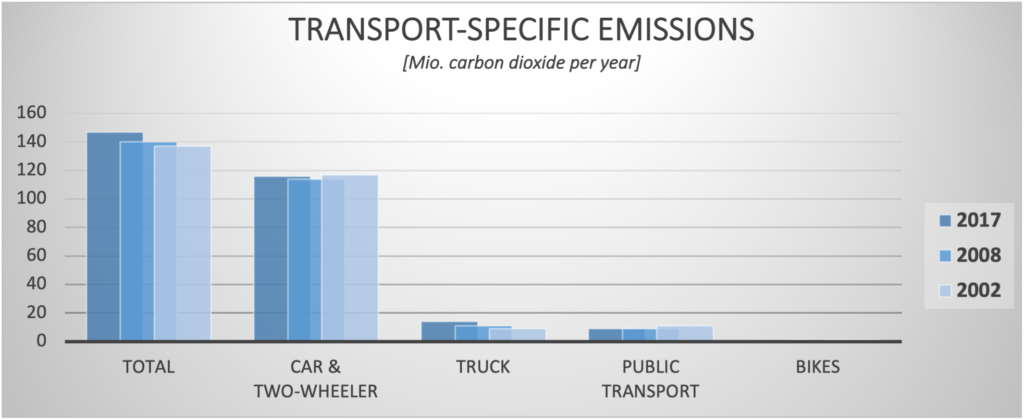Mobility and traffic on the roads cause considerable ecological, social, and economic damage and burdens. The share of traffic in air pollutant emissions is more than 50 percent for carbon monoxide and nitrogen oxides. The high and increasing carbon dioxide emissions from traffic contribute to the greenhouse effect. Road traffic is responsible for this, which is mainly due to the noticeable growth in traffic in recent years and decades.
The following statistics describe the transport specific emissions from 2002, 2008, 2017. It is clear to see that the emissions are steadily increasing. Especially, the car and two-wheeler represent major problems as they are responsible for over 70% of the amount emitted. [4;6]
The modes of transport also cause other burdens. Waste pollution and recycling costsarise from the disposal of transport. Moreover, transport routes have a separating effect by cutting up the natural habitats of wildlife having an unfavourable impact on animal populations. [5]
Land consumption for settlements and transport has a variety of impacts on our environment, especially through soil sealing. Moreover, urban sprawl also leads to more traffic. The amount of land used for transport is constantly increasing. In 1992, the transport area covered 16,441 square kilometres (km²) or 4.61 % of Germany’s total land area. In 2019, it was 18,056 km² or 5.05 %. This means that the transport area grew by almost 10 % between 1992 and 2019. [6]
Last but not least, it should be mentioned that transport consumes a lot of energy. Energy consumption in road transport in Germany remained almost constant with slight fluctuations, but in 2019 it was still around 7% above the 1995 level and is clearly too high overall, because an important component of sustainable transport is the efficient use of the energy used in the form of the final energy sources diesel, petrol, paraffin, and electricity, as well as the use of alternative drives. [6]




